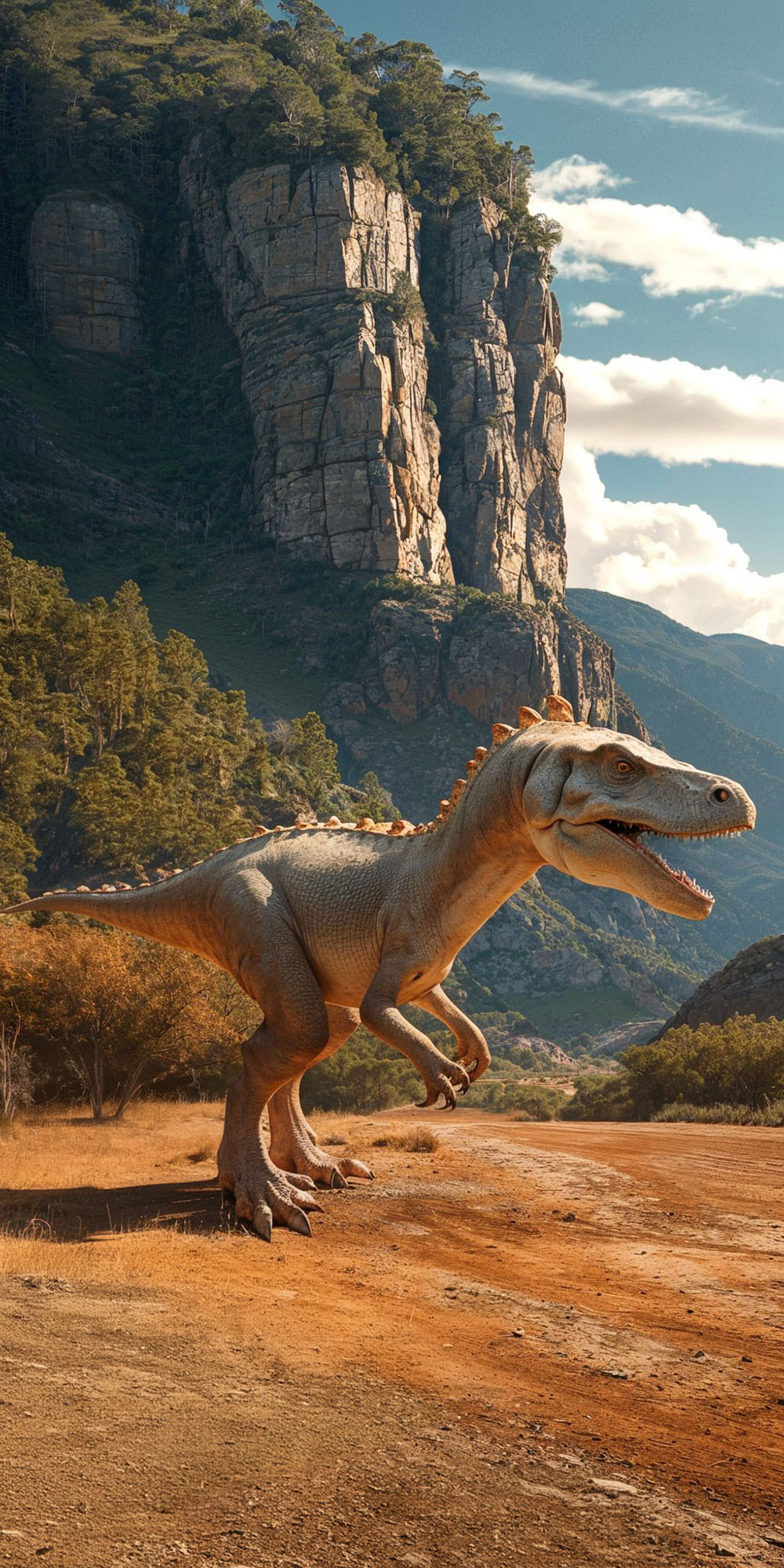The Carcharodontosaurus
Carcharodontosaurus, also known as the "shark-toothed lizard," was a massive carnivorous dinosaur that roamed North Africa during the Late Cretaceous period. It had sharp, serrated teeth that were designed to tear through flesh, a long, muscular tail for balance, and powerful hind limbs for running. This predator could grow up to 40 feet in length and weighed around 8 tons.

| Carcharodontosaurus | |
|---|---|
| Size | Up to 40 feet in length (12 meters) |
| Weight | Around 6-8 tons (5,443-7,257 kilograms) |
| Speed | 24-34 mph (39-55 km/h) |
| Key Strength | Powerful jaws and teeth |
| Biggest Weakness | Slower movement |
| Scientific Name | Carcharodontosaurus |
| Family | Carcharodontosauridae |
| Habitat | Land |
| Geography | Africa |
| Diet | Large herbivorous dinosaurs |
| Lifespan | 20 years - 25 years |

The Carcharodontosaurus
Carcharodontosaurus, also known as the "shark-toothed lizard," was a massive carnivorous dinosaur that roamed North Africa during the Late Cretaceous period. It had sharp, serrated teeth that were designed to tear through flesh, a long, muscular tail for balance, and powerful hind limbs for running. This predator could grow up to 40 feet in length and weighed around 8 tons.
Fun Fact: One fun fact about Carcharodontosaurus is that it had one of the largest skulls of any carnivorous dinosaur, measuring over 5 feet long.
| Carcharodontosaurus | |
|---|---|
| Size | Up to 40 feet in length (12 meters) |
| Weight | Around 6-8 tons (5,443-7,257 kilograms) |
| Speed | 24-34 mph (39-55 km/h) |
| Key Strength | Powerful jaws and teeth |
| Biggest Weakness | Slower movement |
| Scientific Name | Carcharodontosaurus |
| Family | Carcharodontosauridae |
| Habitat | Land |
| Geography | Africa |
| Diet | Large herbivorous dinosaurs |
| Lifespan | 20 years - 25 years |
Carcharodontosaurus Matchups
We use AI to simulate matchups between the Carcharodontosaurus and other animals. Our simulation considers size, strength, and natural predatory behaviors to determine the most likely outcome.
Carcharodontosaurus: Diet, Predators, Aggression, and Defensive Behaviors
What did Carcharodontosaurus eat?
Carcharodontosaurus were carnivorous dinosaurs known for preying on large herbivorous dinosaurs, such as sauropods and ornithopods. Their diet mainly consisted of these plant-eating dinosaurs, and they used their sharp, serrated teeth to tear into their prey's flesh.
Did Carcharodontosaurus have any predators?
As apex predators of their time, Carcharodontosaurus did not have any natural predators. Their large size, powerful jaws, and sharp teeth made them the top predators in their ecosystem, without having to fear being hunted by other animals.
Were Carcharodontosaurus aggressive?
Carcharodontosaurus were likely aggressive predators when hunting for food, using their size and strength to overpower their prey. However, their behavior towards other Carcharodontosaurus is uncertain, as there is limited fossil evidence to suggest if they were social or solitary animals.
Did Carcharodontosaurus fight?
Carcharodontosaurus may have fought amongst themselves for territory or mates, as is common among many carnivorous species. These battles likely involved displays of dominance, such as roaring, posturing, and physical combat, to assert their dominance over rivals.
How did Carcharodontosaurus defend themselves?
Carcharodontosaurus relied on their size, strength, and sharp teeth to defend themselves against potential threats or rivals. Their powerful jaws could deliver devastating bites, allowing them to fend off attacks from other predators or scare away potential threats.
What was the biggest weakness of Carcharodontosaurus in a fight?
Despite their formidable size and strength, Carcharodontosaurus may have been vulnerable to injuries during combat due to their reliance on close-range physical confrontations. Sustaining injuries to their limbs or vital organs could weaken them in a fight, making them more susceptible to defeat by rival predators.
Fun Fact: Carcharodontosaurus is believed to have been one of the largest theropods, possibly even larger than the famous Tyrannosaurus rex.
Fun Fact: Unlike other large theropods, Carcharodontosaurus had slender hollow bones, which may have allowed it to grow large while keeping its weight manageable for faster movement.










